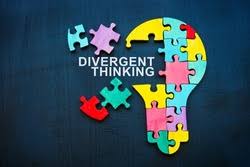From Mentorship to Legacy: The Full-Circle Impact of Dyslexia Innovators
In the world of education, true impact isn’t always immediate—it often ripples through generations. The story of The Reading Center and the individuals it shaped offers a powerful example of how mentorship, innovation, and recognition form a circle that comes back around in the most meaningful way.
A Legacy Begins
In 1951, The Reading Center was founded in Rochester, Minnesota by Paula Dozier Rome, who brought with her the groundbreaking insights of her uncle, Dr. Paul Dozier, and his colleague, Dr. Samuel Orton. Both were neuropsychiatrists with a deep commitment to helping individuals with reading difficulties. Together with master educator Anna Gillingham, they helped shape what is now known as the Orton-Gillingham approach—a structured, multi-sensory method that remains a cornerstone in dyslexia education.
The Mentorship of Rome and Osman
Paula Rome was soon joined by Jean Smith Osman in 1956. Together, they trained thousands of educators and helped over 10,000 students. Their influence extended far beyond Rochester. Known internationally for their publications, The Language Toolkit and The Advanced Language Toolkit, Rome and Osman also served in leadership roles within the International Dyslexia Association and other national organizations.
The Ripple Reaches Robert T. Nash
In 1977, Robert T. Nash began working with Paula Rome and Jean Osman. Their mentorship sparked something deeper in Nash—a calling to continue and expand their work. Just two years later, in 1979, he founded Project Success at the University of Wisconsin Oshkosh, a groundbreaking support program for college students with dyslexia.
Expanding the Vision
Project Success was more than a program; it was a movement. It empowered generations of students and influenced teaching approaches across the Midwest. Nash took the principles he had learned and brought them to new spaces—proving that mentorship, when carried with vision, becomes innovation. In addition, he created a teaching approach called Pure and Complete Phonics which is his original work.
A Full-Circle Moment: The 2023 Hall of Fame Induction
In 2023, The Reading Center inducted Robert T. Nash into its Hall of Fame. The same institution that had planted the seed of dyslexia advocacy in him decades earlier came full circle to honor his contributions. It was more than recognition—it was the return of legacy to its roots.
Why This Story Matters
This story is not just about a program or a plaque. It’s about what happens when knowledge is passed down with care and intention. It shows us how mentorship can become movement, how educators become innovators, and how impact echoes back to where it began. The Reading Center didn’t just shape one leader—it created a lineage of change-makers.
That’s the true ripple effect of dyslexia innovation.
Sincerely
Shawn Anthony Robinson PhD
Reference
Rome, P. D., & Osman, J. S. (1979). Procedures for helping the dyslexic child: Remediation. Pediatric Annals, 8(11), 57–83.
Nash, R. T., Kitz, W. R., & Twohig, P. (1989, March 1). Project Success—A remedial program for postsecondary learning disabled students. American Association of State Colleges and Universities, Washington, D.C.; Wisconsin University, Oshkosh. ERIC Clearinghouse on Higher Education.




Comments
Post a Comment